Adromischus cristatus var. zeyheri
Adromischus cristatus (Haw.) Lem. var. zeyheri (Harv.) Toelken
Family: Crassulaceae
Common names: green-leaved cliff-adromischus (Eng.), groen-skilpadvoetjie (Afr.)
Introduction
Adromischus cristatus var. zeyheri is a dwarf, cliff-hugging succulent from the southeastern parts of South Africa. The plants are dwarf, rosette-forming, leaf and stem succulents, with apple green, triangular, glandular hairy leaves and yellowish-green tubular flowers with white to pinkish lobes, in summer and autumn. Easily propagated from leaf cuttings, and best grown in containers.
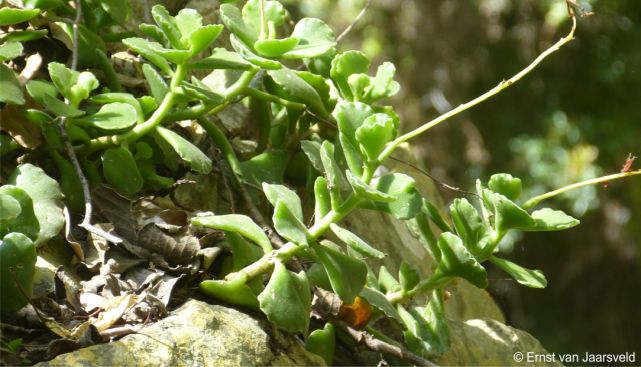
Fig. 1. A close view of the leaves and stems in a cluster of Adromischus cristatus var. zeyheri growing on a ledge at Oribi Gorge, KwaZulu-Natal.
Description
Description
The plants are small, compact to lax, little to moderately-branched, succulent shrublets with reclining (decumbent) stems. The stems are succulent, green, 5–10 mm in diameter, sometimes drooping from cliff faces. The roots are fibrous, the stems without aerial roots or rarely producing them. The leaves are variable in size and shape, broadly reversed triangular (obtriangular), flattened (dorsiventrally flattened), 20–60 × 15–45 mm. The leaf surface is green to slightly yellowish green, covered in minute glandular hairs, the margin acute, sometimes undulating, horny, green to purplish brown. The leaf tip is obtuse, rounded or blunt (truncate) and the base wedge-shaped (cuneate). The leaf petiole rounded and decurrent on blade. The inflorescence is a spike-like thyrse, 140–380 mm high, bearing 1-flowered cymes. The flowers with short pedicels 1 mm long. The buds are spreading, terete, tapering, purplish tipped. The calyx is 2–3 mm long. The individual flowers (corolla) 10–12 mm long with a green tube, up to 8 mm in diameter when fully opened. The floral lobes are egg-shaped to triangular (ovate-triangular), up to 4 mm, white to pinkish, with minute club-shaped glandular hairs (trichomes) in its throat, ending in a sharp point (apices acute). The anthers included. Flowering time is in summer and autumn (November–May).
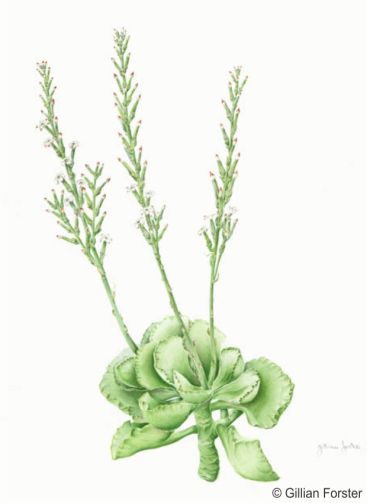
Fig. 2. Painting of Adromischus cristatus var. zeyheri from Oribi Gorge by botanical artist Gillian Forster.
Conservation Status
Status
Assessed as Data Deficient - Insufficient Information (DDD) by the Red List of South African Plants in 2007, Adromischus cristatus var. zeyheri is not threatened. The plants are safeguarded by their difficult to reach habitat and its distribution falls within a greater conservation region.
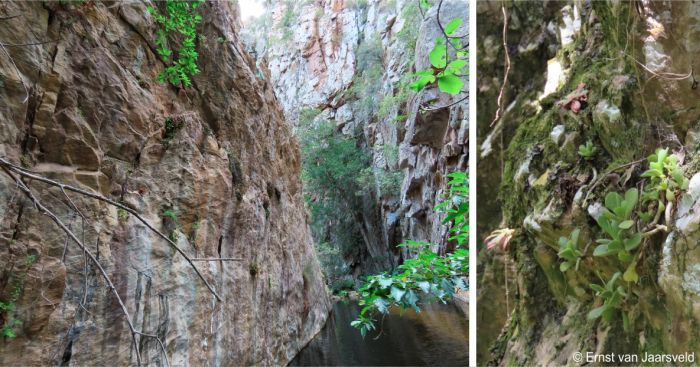
Fig. 3. The cliffs in the eastern Baviaanskloof, Eastern Cape, habitat of Adromischus cristatus var. zeyheri, and a close-up of a cluster growing on a sandstone ledge.
Distribution and habitat
Distribution description
Adromischus cristatus var. zeyheri has a disjunct distribution. Known from the tributaries of the Gamtoos River, the Baviaanskloof-, Groot- and Kouga Rivers, near Patensie in the Eastern Cape and then again from Oribi Gorge and Umtamvuna River Valley in KwaZulu-Natal and the adjacent Mzamba River in the Eastern Cape. Andrew McKay, field botanist, recently discovered two populations along south-facing cliffs of the Umkomaas River, which represents the northernmost distribution of Adromischus cristatus var. zeyheri.
Plants grow on quarzitic sandstone cliff faces (Cape Supergroup), at 50–800 m altitude, in deep, sheltered, shady kloofs and river gorges, and in exposed habitats, on all aspects but more on the south-facing ones, rooted on ledges and crevices. Temperatures vary and may reach 40°C in summer. The winters are cooler but frost is rare or absent. Average daily maximum temperature is 20–23°C and average daily minimum 10–14°C. Rainfall occurs mainly in summer, but in the southern parts in winter as well. The associated vegetation includes Gamtoos Thicket in the south and KwaZulu-Natal Coastal Belt of the Indian Ocean Coastal Belt in the north.

Fig. 4. Cliffs at Oribi Gorge, KwaZulu-Natal, habitat of Adromischus cristatus var. zeyheri, and a close-up of a plant growing on a ledge.
At Oribi Gorge, plants grow on south-facing quarzitic sandstone cliffs of the Natal Group (Cape Supergroup) in Eastern Valley Bushveld, in association with Delosperma lebomboensis, Aloe arborescens, Bulbine latifolia, Caputia medley-woodii, Caputia oribiensis, Gasteria croucheri and Plectranthus ernstii. Along the eastern Baviaanskloof Mountains plants were observed growing in a deep, south-facing kloof on sheer cliffs among moss and lichen with other succulents such as Gasteria camillae, Crassula cordata, Crassula orbicularis and Cotyledon woodii. Here the plants grow on mineral-poor, quarzitic sandstone (Peninsula Formation, Cape Supergroup). At Umkomaas, just south of Durban in KwaZulu-Natal, plants grow on shady, well vegetated south-facing cliffs, with Caputia medley-woodii, Crassula cultrata, Crassula orbicularis, Crassula perfoliata, Crassula multicava subsp. floribunda, Delosperma lebomboense, Gasteria croucheri, Aeollanthus parvifolius and Sansevieria hyacinthoides.
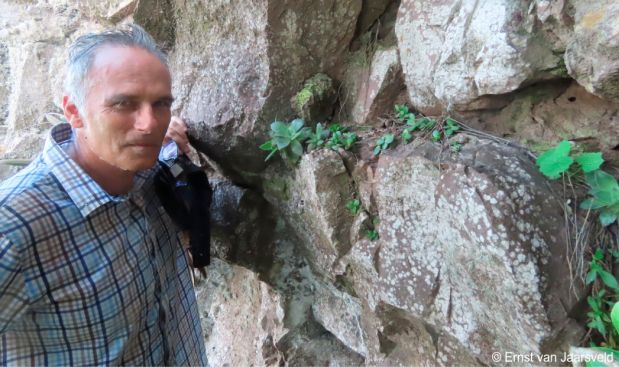
Fig. 5. Andrew McKay, at the northernmost location of Adromischus cristatus var. zeyheri, which he discovered, growing on a shady cliff face along the Umkomaas River in KwaZulu-Natal).
Derivation of name and historical aspects
History
Adromischus cristatus var. zeyheri was named in 1862 by Willliam Harvey (1811–1866) in the Flora Capensis as Cotyledon zeyheri from plants collected from the Kenko River in the Swellendam District by Carl Zeyher (1799–1858). The German succulent student Karl von Poellnitz (1869–1945) transferred it to its rightful place in the genus Adromischus in 1938. The genus name Adromischus is derived from the Greek words adros meaning ‘thick’ and miskhos meaning ‘a stalk’. The name zeyheri honours the collector Carl Zeyher (1799–1858), a well known German botanist, plant collector and explorer in South Africa. Several attempts to find it in the Swellendam District failed. Helmut Toelken, who revised the family Crassulaceae in southern Africa, thought it fitted better within the Adromischus cristatus complex and reduced its species status to a variety. The name cristatus means ‘crested’ or ‘tufted’. Adromischus cristatus as a species, is at once distinguished by its stems covered in dense tufts of reddish aerial roots. Adromischus cristatus var. zeyheri is the only member without or sometimes with a few aerial roots. Helmut Toelken recognized four varieties for Adromischus cristatus: var. cristatus, var. clavifolius, var. schonlandii and var. zeyheri. The fifth variety, var. mzimvubuensis, was added by the author in 2003.
Adromischus cristatus var. zeyheri is one of five Adromischus species that belongs to section Longipedunculati. The latter was established by Carl von Poellnitz in 1940 to accommodate those species characterised by funnel-shaped, glaucous-green, slightly grooved floral tubes and with spear-shaped to triangular lobes. Within the throat of the tube can be found minute club-shaped trichomes. The colour of the lobes is usually white with darker mauve and rarely red lines. Other members of this section include A. leucophyllus, A. subviridus, A. cooperi and A. marianiae. Of these only A. cristatus var. zeyheri, A. cristatus var. schonlandii, A. cristatus var. mzimvubuensis and A. leucophyllus are associated with cliffs.
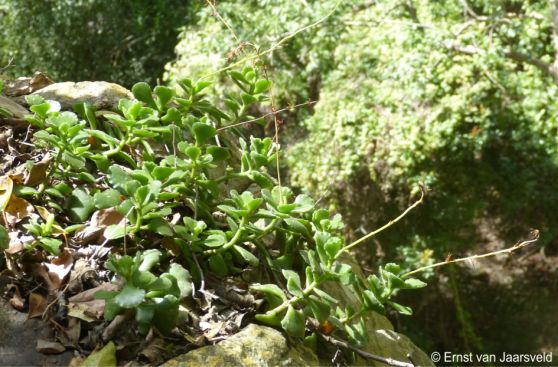
Fig. 6. A cluster of Adromischus cristatus var. zeyheri in fruit growing on a ledge at Oribi Gorge, KwaZulu-Natal.
Ecology
Ecology
Plants form loose, little-branched clusters, becoming sub-pendent on cliffs, with leaves crowded at the apices. Stems becoming reclined (decumbent), sub-pendent to pendent, up to 200 mm long, an adaptation to its xeric but shady conditions. The soil is limited and therefore with very little competition from other non-succulent plants. The succulent leaves and stems ensure its long term survival during periodic droughts. The stems are succulent, green, and up to 10 mm in diameter, not covered with the dense aerial roots as found in the other related non-cliff-dwelling species of Adromischus. A character that perhaps can be related to its shady, south-facing habitat and optimising absorption of light through the branches. The longer stems and sometimes sub-pendulous nature is an adaptation to its cliff face environment.
The relatively large, dorsiventrally flattened leaves, often undulating at the tips, maximise absorption of light on the shady cliffs. The leaves are firm, not becoming detached by slight disturbances like those of related level-ground species whose detached leaves root and proliferate, forming new plants. The leaves are usually long-lived, and are retained for more than a year.
The plants are soft-leaved without conspicuous armament or camouflage properties, because they have become adapted to the undisturbed cliff face.
Plants flower from summer to autumn (November–May) but sporadically at other times. The fruiting capsules are dehiscent, with seeds spontaneously released and dispersed by wind in autumn and winter. The seed is minute and ideal for establishment in crevices. Detached leaves and pendent stems finding new crevices will root spontaneously, an efficient backup strategy for survival in this xeric cliff-face environment.
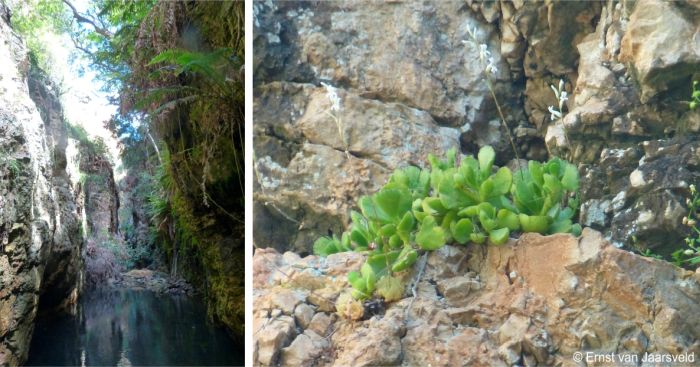
Fig. 7. The shady deep Geelhoutboskloof in the Baviaanskloof, habitat of Adromischus cristatus var. zeyheri, and a cluster growing on a ledge with Haworthia cooperi var. picturata in flower at Geelhoutboskloof.
Uses
Use
Apart from its popularity among growers of succulent plants, no other uses have been recorded.
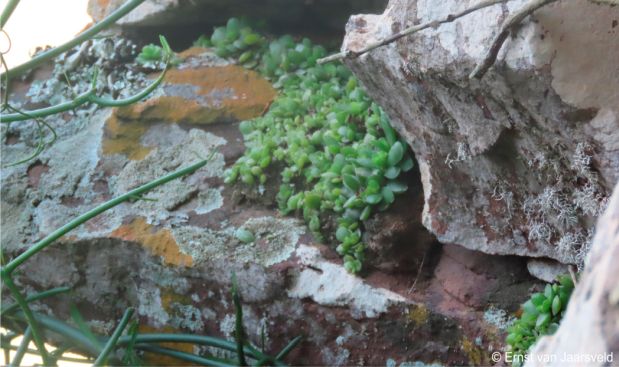
Fig. 8 A group of Adromischus cristatus var. zeyheri on a shady cliff ledge along the Umkomaas River, KwaZulu-Natal, the northernmost distribution point of this species.
Growing Adromischus cristatus var. zeyheri
Grow
Plants are usually easily grown and propagated and are becoming popular pot plants in cultivation. It grows best in dappled shade, in a sandy-loam to loamy soil. Plants rapidly respond to watering, becoming turgid and eventually filling the containers. Plants can be fed with an organic fertiliser throughout the year. Its very easy growing nature maximises its survival rate. Plants adapt well to containers.
In regions outside of its habitat ceramic containers are the solution. It also grows well with other succulents in miniature succulent gardens where conditions can be controlled. Grow in a gravely or sandy soil which drains well. Keep in dappled shade. Plants are easily propagated by leaf or stem cuttings taken in late summer, and are not too difficult to root. Avoid over watering as plants tend to rot. Water should be provided throughout the year, but sparingly.
Sow seeds in winter or spring in a shallow tray in a sandy mixture and keep moist. Germination is within 3 weeks and once seedlings are large enough to handle, transfer them to individual containers. Place the container in a shady position but with full light. The south side of a building is ideal.
Plants are relatively disease free, except for stem and root rot caused by too much watering and/or poorly draining soil. Aphids, wine weevils, slugs and snails can sometimes be a problem.
References
- Clarke, H. & Charters, M. 2016. The illustrated dictionary of southern African plant names. Flora & Fauna Publications Trust, Jacana, Johannesburg.
- Johnson, M.R., et al. 2006. Sedimentary rocks of the Karoo Supergroup. In M.R. Johnson, C.R. Anhaeusser & R.J. Thomas (eds), The geology of South Africa: 463–501. Geological Society of South Africa, Johannesburg Council for Geoscience, Pretoria.
- Mucina, L. & Rutherford, M.C. (eds) 2006. The vegetation of South Africa, Lesotho and Swaziland. Strelitzia 19. South African National Biodiversity Institute, Pretoria.
- Pilbeam, J., Rodgerson, C. & Tribble, D. 1998. Adromischus. The Cactus File Handbook 3. Cirio Publishing Services, Southampton.
- Raimondo, D. 2007. Adromischus cristatus (Haw.) Lem. var. zeyheri (Harv.) Toelken. National Assessment: Red List of South African Plants. https://redlist.sanbi.org/species.php?species=3831-10.
- Toelken, H.R. 1977. A revision of the genus Crassula in southern Africa. Contributions from the Bolus Herbarium No.8. Bolus Herbarium, University of Cape Town.
- Van Jaarsveld, E.J., Nordenstam, B. & Van Wyk, A.E. 2004. Adromischus schuldtianus subsp. brandbergensis, a new subspecies and a checklist of the succulent flora of the Brandberg, Namibia. Bothalia 34: 35–38.
- Van Jaarsveld, E.J. & Van Wyk, A.E. 2003. New cliff-dwelling Crassulaceae from the Eastern Cape: a new Cotyledon and two new Adromischus taxa from the Mbashe and Mzimvubu Rivers, South Africa. Aloe 40(2): 36–40.
- Von Poellnitz, K. 1940. Zur Kenntnis der Gattungen Cotyledon L. und Adromischus Lem. Feddes repertorium specierum novarum regni vegetabilis, Zeitschrift für systematische Botanik 48: 80–113.
Credits
Ernst van Jaarsveld
Kirstenbosch National Botanical Garden (Retired)
Babylonstoren Farm (Current)
Extraordinary senior lecturer and researcher,
Department of Biodiversity and Conservation, University of the Western Cape
June 2025
Acknowledgements: the author thanks his colleagues Cornell Beukes and Nico van Wyk for assisting him on various trips to see the plants in habitat.
Plant Attributes:
Plant Type: Succulent
SA Distribution: Eastern Cape, KwaZulu-Natal
Soil type: Sandy
Flowering season: Early Summer, Late Summer
PH: Acid
Flower colour: Purple, White
Aspect: Shade, Morning Sun (Semi Shade)
Gardening skill: Easy
Special Features:
Horticultural zones
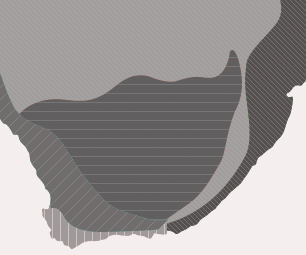






Rate this article
Article well written and informative
Rate this plant
Is this an interesting plant?
Login to add your Comment
Back to topNot registered yet? Click here to register.